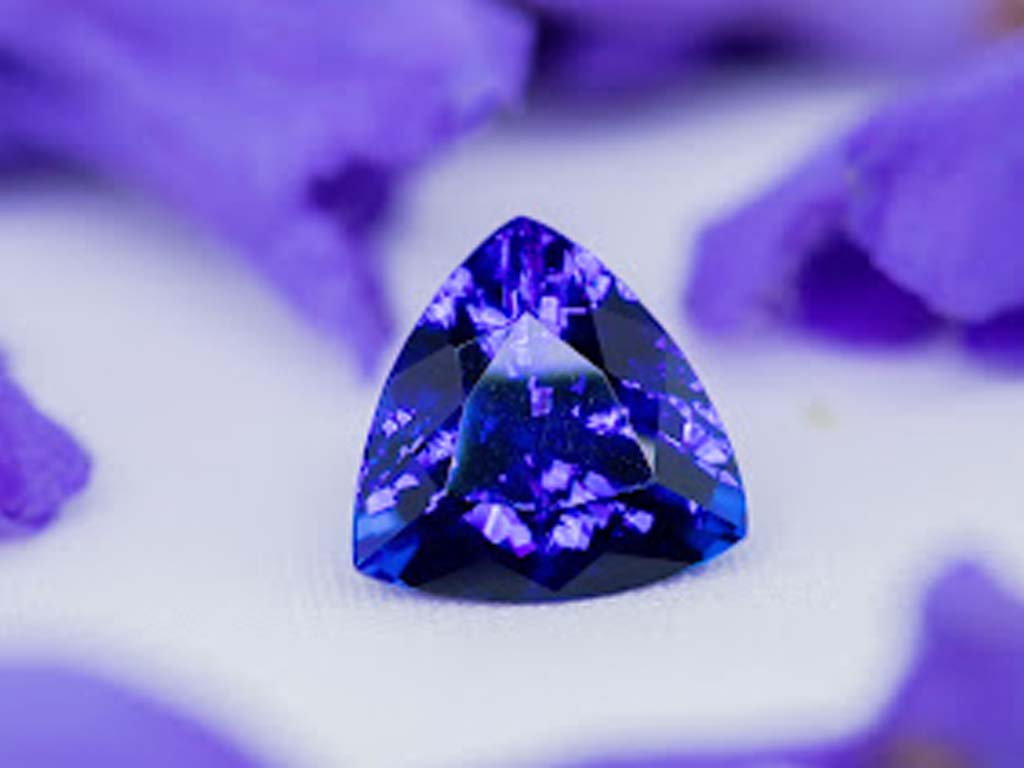Take a look at our New Arrivals: a variety of selections now available!
Fancy a tanzanite? Well, then knowing the stone is the first step towards owning it. To begin with, let us talk about the rich history of tanzanite and how this mesmerizingly colorful stone became revered among mankind.
We all know that it is the rarity and unique features of tanzanite that make it such a revered gemstone. Also, its rich history and mention of ancient lore make it even more special in the gemstone world.
In this blog, we shall talk about the history of tanzanite and how a mineral derivative became one of the most valued and frequently bought gemstones in the world.
When was tanzanite discovered?
The December gemstone was first discovered 550 years ago when a Maasai tribesman found a cluster of intriguing violet-to-blue colored crystals with a transparent appearance in Merelani northern Tanzania. The tribesman, realizing something special about the stones, was quick to gather them and run them through a Goan tailor and part-time gold prospector named Manuel D'Souza.
D’Souza saw the potential of the stones and quickly determined them to be olivine (peridot) and then "dumortierite". In his confusion, D’Souza showed the gems to John Saul, a Nairobi-based consulting geologist and gemstone wholesaler concluded that these stones were neither olivine nor dumortierite and sent the samples to his father Hyman Saul, vice president at Saks Fifth Avenue in New York.
Hyman took the samples to mineralogists at Harvard University, the British Museum, and Heidelberg University, but no final decision was made. It was then that McCloud, a Tanzanian government geologist based in Dodoma identified the sample correctly as zoisite.

By this time, D’Souza had already filed 4 mining claims as he thought the stone to be blue sapphires. More people were interested in the unknown stone and thus 90 more claims appeared in the same 20-square-mile area. The recognition made sure that all these mining claims would turn into profitable businesses very soon.
What makes the history of Tanzanite more interesting is when Tiffany & Co. Took notice of the gemstone. The experts at Tiffany & Co. realized the potential of this gemstone and signed a deal to become the main distributor of the gemstone- tanzanite.
This was a part of the history of tanzanite, especially when it was discovered, by whom, and where. Now let us talk about the name of the gemstone- tanzanite.
How did tanzanite get its name?
A significant part of the history of tanzanite is how this gemstone got its name. It was in 1968, tiffany & co. Decided to name the gemstone. Till then it was blue zoisite which was not a very favourable gemstone name to promote it in the market. Hence, Tiffany & Co. chose to name the gemstone after its place of origin which was Tanzania, and hence the name tanzanite. In the same year, Tiffany & Co. Launched a huge publicity campaign to make Tanzanite known to the world.
Tiffany & co, capitalized on the rarity and uniqueness of this gemstone and it soon became a market sensation. Gemstone enthusiasts as well as jewelry designers and sellers from all across the world wanted to buy tanzanite and make their share of profits.
Tanzanite became an instant hit in the colored gemstone galaxy and the rest is history. since then blue zoisite became tanzanite – a revered blue-to-violet gemstone known for its striking color, high clarity, and variety of cut possibilities.
Tanzanite mining development
The history of tanzanite would be incomplete if we did not mention the mining developments. Tanzanite is mined in a limited area at the Merelani hills in Tanzania, east Africa. The mining area is stretched in a 1-mile broad and 5-mile-long patch where tanzanites are found exclusively. The exclusivity of this gemstone makes it rarer than diamonds which are abundantly found in several mines across the globe.

The Tanzanite government took charge of dividing the mining area into four Blocks- A, B, C, and D. The large operators got Blocks A and B while Blocks C and D were given to local miners.
Later in 2005, block c was given on lease to TanzaniteOne against a deposit of us$40 million.
Properties of Tanzanite
Tanzanite gemstone is known for its rich properties and hence history of tanzanite has great mentions of its features. This gemstone has been known to the world for a short time but is compared with the oldest and best of the gemstones considering the fact that it is not synthesized and is only available in the form of natural zoisite in the market. Some of the typical properties of tanzanite that make it a revered gemstone include:
Color:
Tanzanite was considered precious as soon as it was first discovered because of its unique color. This gemstone shows a spectrum of blue to violet color with all other hues in between. Plainly saying, the gemstone’s true color can be identified as lavender but then again, it has distinct color appearances under different lights, a property known as pleochroism.

Pleochroism:
In the history of tanzanite, the confusion about the identification of this stone was evident because it changed color every time it was looked under the light spectrum. It was soon concluded that the gemstone has a unique property known as pleochroism. It is a scientific phenomenon that explains the property of an object that appears in different colors based on the angle at the light it is being viewed. Tanzanite, being a pleochroic gemstone can show blue, violet, and even red colors depending upon the angle of the light.
While it is a rare property of a gemstone, it also makes cutting tanzanite tough as determining the best color is the ultimate goal.
Reaction to heat:
Tanzanite reacts to heat- both natural and artificial. The formation of tanzanite starts as a brownish crystal which has trichroic property which means it shows three colors -brown, blue, and violet. It is the heat from the metamorphic process under the earth that converts the stone into dichroic featuring only two colors-blue and violet.
Artificial, tanzanite is treated in furnaces at a temperature between 370 and 390 °c to enhance its color. The heating takes place under close observation of experts to ensure no damage is caused to the gemstone. The gemstones sold in the market are ones that have undergone heat treatment.
Mystical power of tanzanite
The history of tanzanite is relatively new considering the recent of when it was discovered. There is not much mention of the use of the gemstone in any ancient lore. In Tanzania, blue-colored gemstones are worn by women, especially by those who have recently given birth. The gemstone is considered to bring good health and fortune to the newborn.
But, this gemstone has amazing mystical properties that make it popular in the gemstone community.
Some of the primary reasons why tanzanite gained the top ranks in the gemstone jewelry world include:

Caring for your tanzanite
If you are a proud owner of a tanzanite gemstone or tanzanite jewelry, you must be happy to learn about the history of tanzanite. Now, it is time to learn how to care for your tanzanite as this precious stone has the nature of getting easy wear and tear effects along with a quick reaction to heat.
Make sure you store your tanzanite in the original boxes, away from sunlight and heat. You should also clean the tanzanite regularly to preserve it in the best conditions.
The rich history of tanzanite and when it was discovered makes the gemstone shine in a new light. With this understanding, you are all set to venture into the market and buy yourself the best tanzanite gemstone and tanzanite jewelry. Although the stone is relatively new, its rarity and exclusive origin make it one of the highest-demand gemstones in the world.
